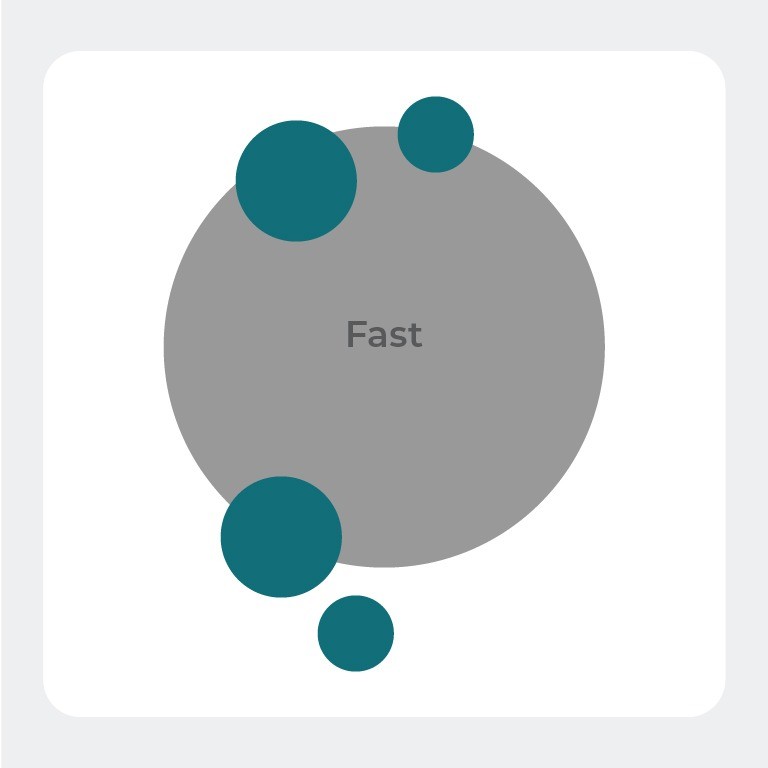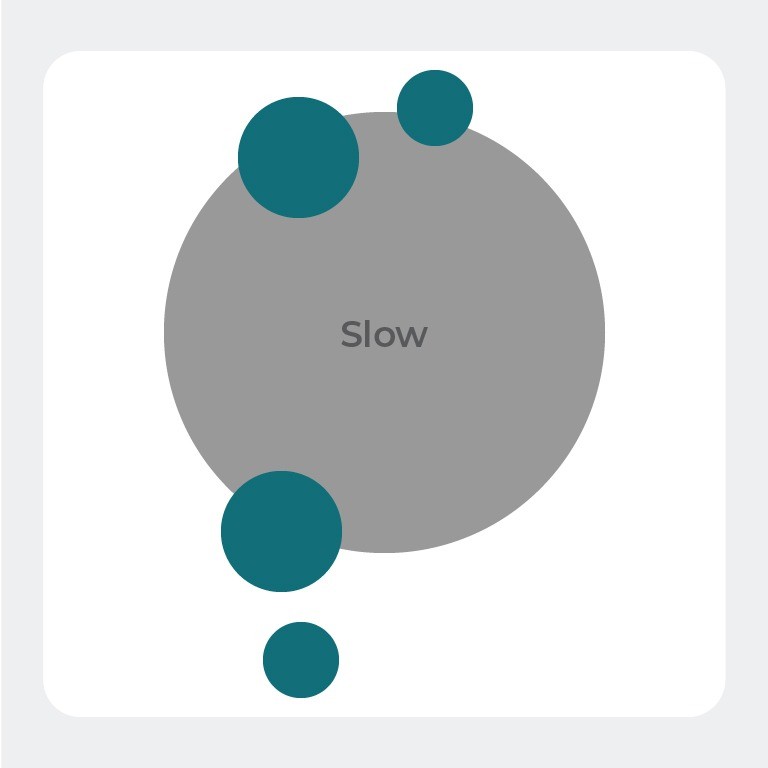
Dosing REAGILA
- All approved doses of REAGILA for the treatment of schizophrenia are effective1.
- In the short-term studies, statistically significant effects were seen after 1 week of treatment for REAGILA 3-6 mg and after 2 weeks of treatment for REAGILA 1.5 mg2-4.
- For negative symptoms, a significant effect was seen after 10-14 weeks of treatment using the 4.5 mg dose of REAGILA; negative symptom improvement takes longer than positive symptom improvement5.
- Rescue medication (including benzodiazepines and sleeping medication) can be co-administered with REAGILA in the acute phase if necessary2-4.
- The maintenance dose of REAGILA is the dose the patient was taking when they stabilized and experienced good efficacy6.
In this section
The Approved Doses for REAGILA in Schizophrenia
Based on efficacy and tolerability in clinical studies, the approved dose range of REAGILA for the treatment of schizophrenia in adult patients is 1.5-6 mg/d1. REAGILA comes in 4 different dose strength capsules (1.5 mg, 3 mg, 4.5 mg, and 6 mg) and all doses are effective in treating schizophrenia. The recommended starting dose of REAGILA is 1.5 mg; thereafter, the dose can be slowly increased in 1.5 mg increments to a maximum dose of 6 mg/d, if needed. REAGILA is taken once daily, morning or evening, and it can be taken with or without food1.
Are There Target Doses for REAGILA?
REAGILA for the treatment of adults with schizophrenia has been available in the US since 2015 and in the EU since 2017. The dosing strategies provided here are complementary to the information provided in EU and US prescribing information and have developed from clinical trial experience and experience in the field to help guide clinicians.
1.5 mg/d
The starting dose of REAGILA is 1.5 mg/d. This is the lowest effective dose and it has the lowest adverse event load4.
3 mg/d
3 mg REAGILA is the average dose for the treatment of schizophrenia (World Health Organisation Defined Daily Dose), and an effective dose that most patients will likely benefit from2-4.
4.5 mg/d
The 4.5 mg dose has been used in the negative symptom study as a target dose. Patients with persistent, predominant negative symptoms of schizophrenia have benefited from this dose in their symptom control and functioning. Therefore, although lower doses might also be effective in the treatment of negative symptoms, a decision on insufficient therapeutic response should not be taken unless the dose has been increased until 4.5 mg/day. Still then, a visible improvement might take 10-14 weeks5. Further, for the treatment of general schizophrenia the 4.5 mg dose has been shown to be an effective dose4.
6 mg/d
The highest approved dose of REAGILA is 6 mg/d1. In the clinical studies there was an increase in efficacy with increased doses, and the 6 mg/day was most effective2-4.
Maintenance Dose
The dose at which an individual patient stabilizes and experiences good efficacy should be considered the maintenance dose of REAGILA for that patient6. The lowest effective dose should be maintained according to the clinical judgement of the treating physician1.
General Dosing Guidelines for REAGILA
In the short-term clinical studies, significant effects were seen after 1 week for the 3 mg/d, 4.5 mg/d and 6 mg/d doses; and after 2 weeks for the 1.5 mg dose2,4. For negative symptoms, a significant effect was seen after 10-14 weeks of treatment with REAGILA 4.5 mg/d since negative symptom improvement takes longer than positive symptom improvement5.
In order to give patients time to respond to REAGILA, physicians should allow 1 week for 3-6 mg/day REAGILA therapy, 2 weeks for 1.5 mg/day therapy, and 4 weeks for the drug to reach steady state2,5,6. Because of the long half-life of REAGILA and its active metabolites, changes in dose will not be fully reflected in plasma for several weeks1. Patients should be monitored for adverse reactions and treatment response for several weeks after starting REAGILA and after a dosage change1. Physicians should also be aware that rescue medications (ie, benzodiazepines, sleeping medication) can be used to treat side effects in the acute phase of treatment2-4.
Fast2-4,6 or Slow5 Titration?
For more acutely ill patients and for patients receiving high doses of previous antipsychotic medications, daily dose increases in 1.5 mg increments until the target dose is reached might be a valid dosing regimen.


For stable patients, weekly dose increases of REAGILA 1.5mg/d might be a valid dosing regimen5. Because of the long half-life of REAGILA and its active metabolites, changes in dose will not be fully reflected in plasma for several weeks1.
In the Negative Symptom study the treatment consisted of a 2-week REAGILA up-titration phase, with antipsychotic treatment taken during the lead-in period being down-titrated during this period and discontinued on day 14; to decrease the severity of withdrawal effects or impending deterioration, the investigator could prolong down-titration for a maximum of 4 weeks5.


References
- Reagila SmPC.
- Durgam, S. et al. Cariprazine in acute exacerbation of schizophrenia: A fixed-dose, phase 3, randomized, double-blind, placebo- and active-controlled trial. J. Clin. Psychiatry 76, e1574-82 (2015).
- Kane, J. M. et al. Efficacy and Safety of Cariprazine in Acute Exacerbation of Schizophrenia: Results from an International, Phase III Clinical Trial. J. Clin. Psychopharmacol. 35, 367–373 (2015).
- Durgam, S. et al. An evaluation of the safety and efficacy of cariprazine in patients with acute exacerbation of schizophrenia: A phase II, randomized clinical trial. Schizophr. Res. 152, 450–457 (2014).
- Németh, G. et al. Cariprazine versus risperidone monotherapy for treatment of predominant negative symptoms in patients with schizophrenia: a randomised, double-blind, controlled trial. Lancet 389, 1103–1113 (2017).
- Durgam, S. et al. Long-term cariprazine treatment for the prevention of relapse in patients with schizophrenia: A randomized, double-blind, placebo-controlled trial. Schizophr. Res. 176, 264–271 (2016).
Dosing Guide
The cariprazine Dosing Guide is a practical material for prescribers that provides information on the different dose strengths, administration, as well as titration strategies such as how to titrate patients in hospital care (fast up-titration) and outpatient care (slow titration). It also showcases data on equivalent doses to other antipsychotics and aspects to consider when switching from other antipsychotics including partial agonists and full antagonists.
STARTING DOSES FOR REAGILASTARTING DOSES FOR OUR PRODUCT
REAGILA is indicated for the treatment of schizophrenia in adult patients. This covers all types of symptoms of schizophrenia, including positive, negative, cogFind out more about the starting doses from first episode to relapse
more…SCHEMES FOR SWITCHING TO REAGILASCHEMES FOR SWITCHING TO CARIPRAZIN…
The ultimate goal in schizophrenia treatment is recovery, which encompasses symptom remission in addition to adequate self-care, improved social and vocational The ultimate goal in schizophrenia treatment is recovery, which encompasses symptom remission in addition to adequate self-care, improved social and vocational
more…

